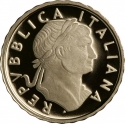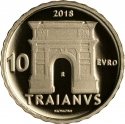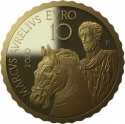You are about to finish your registration. Please check your mailbox (including spam folder). There should be a letter with a confirmation link. Check setting to make sure that your e-mail address is correct.
Send letter againDescription
Caesar Augustus (born Gaius Octavius; 63 BC – AD 14), also known as Octavian, was the first Roman emperor; he reigned from 27 BC until his death in AD 14. He is known for being the founder of the Roman Principate, which is the first phase of the Roman Empire, and is considered one of the greatest leaders in human history. The reign of Augustus initiated an imperial cult as well as an era associated with imperial peace, the Pax Romana or Pax Augusta.
His maternal great-uncle Julius Caesar was assassinated in 44 BC, and Octavius was named in Caesar's will as his adopted son and heir; as a result, he inherited Caesar's name, estate, and the loyalty of his legions. He, Mark Antony and Marcus Lepidus formed the Second Triumvirate to defeat the assassins of Caesar. Following their victory at the Battle of Philippi (42 BC), the Triumvirate divided the Roman Republic among themselves and ruled as de facto dictators. The Triumvirate was eventually torn apart by the competing ambitions of its members; Lepidus was exiled in 36 BC, and Antony was defeated by Octavian at the Battle of Actium in 31 BC.
After the demise of the Second Triumvirate, Augustus restored the outward façade of the free republic, with governmental power vested in the Roman Senate, the executive magistrates and the legislative assemblies, yet he maintained autocratic authority by having the Senate grant him lifetime tenure as commander-in-chief, tribune and censor. A similar ambiguity is seen in his chosen names, the implied rejection of monarchical titles whereby he called himself Princeps Civitatis (First Citizen) juxtaposed with his adoption of the title Augustus.
Augustus dramatically enlarged the Empire, annexing Egypt, Dalmatia, Pannonia, Noricum and Raetia, expanding possessions in Africa, and completing the conquest of Hispania, but he suffered a major setback in Germania. Beyond the frontiers, he secured the empire with a buffer region of client states and made peace with the Parthian Empire through diplomacy. He reformed the Roman system of taxation, developed networks of roads with an official courier system, established a standing army, established the Praetorian Guard as well as official police and fire-fighting services for Rome, and rebuilt much of the city during his reign.
The month of August (Latin: Augustus) is named after Augustus; until his time it was called Sextilis (named so because it had been the sixth month of the original Roman calendar and the Latin word for six is sex).
Artist: Silvia Petrassi
Obverse

|
Depicts a free interpretation of the portrait of Emperor Augustus, facing right, inspired by an ancient coin, surrounded by the country name. The initials of the designer Silvia Petrassi (SP) on the left. REPVBBLICA ITALIANA |
|---|---|
Reverse

|
Depicts a detail of the frieze with acanthus spirals from the lower register of the Ara Pacis. The inscription "Augustus" above, the mintmark (R) and the issue year on the left, and the value below. AVGVSTVS |
| Edge |
10 Euro
Roman Emperors
Augustus
Subscribe series
KM#
Roman Emperors
Augustus







